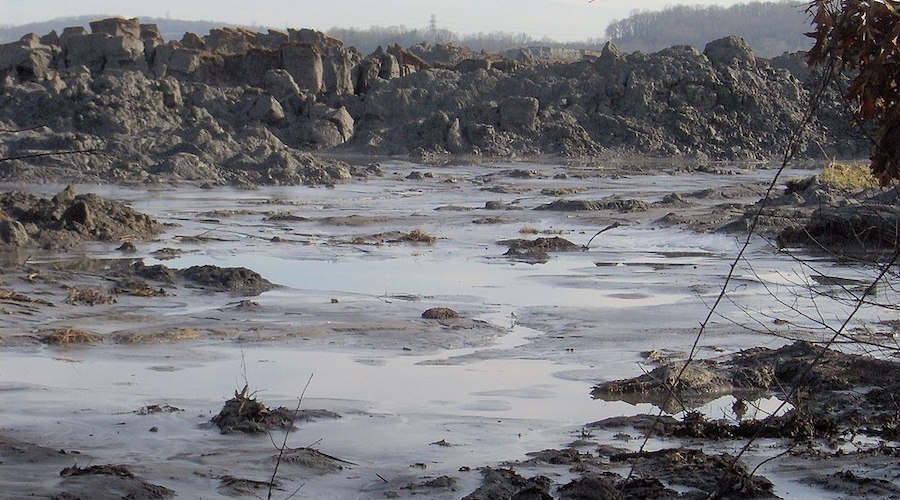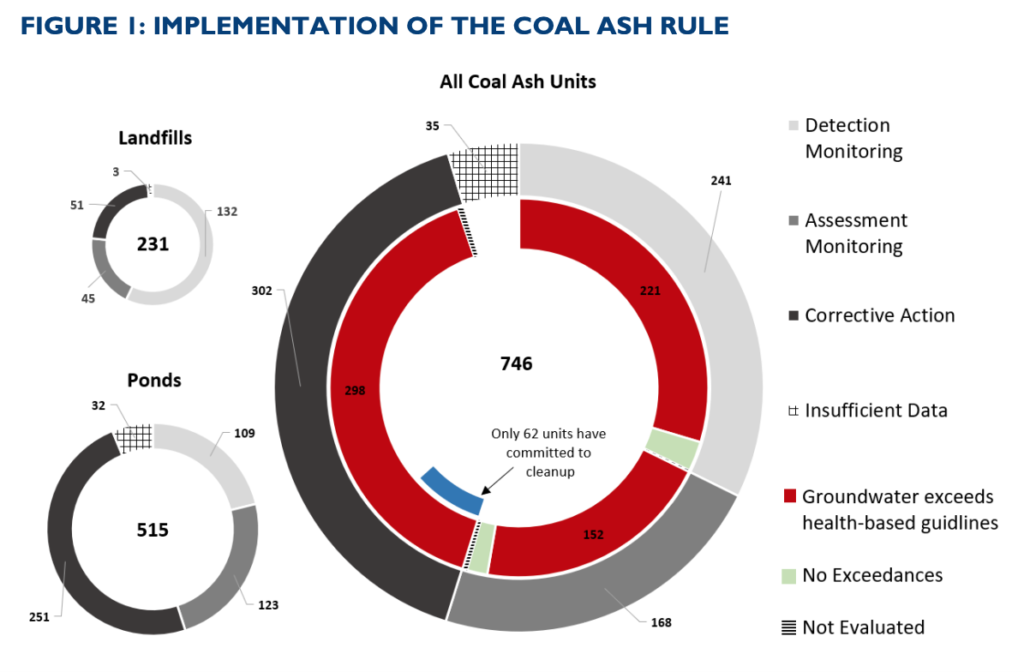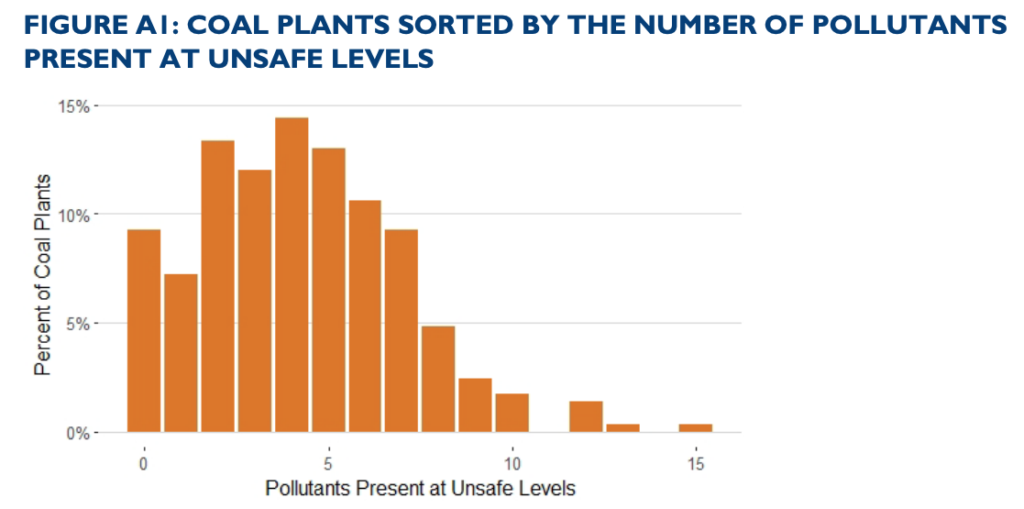Hundreds of power plants in the US violate Coal Ash Rule – report

A recent report by the Environmental Integrity Project (EIP) and Earthjustice found that seven years after US Environmental Protection Agency imposed the first federal rules requiring the cleanup of coal ash waste dumps, only about half of the 265 power plants that are contaminating groundwater agree that cleanup is necessary, and 96% of these power plants are not proposing any groundwater treatment plan.
The report, which is based on an examination of public records and data from coal plants across the country, also found that out of the 292 power plants assessed in 43 states, only one is planning a comprehensive cleanup, while 10 are proposing incomplete cleanup plans.
“The failure of the vast majority of power companies to follow the 2015 Coal Ash Rule has serious consequences for water quality and public health. Monitoring data shows that 91% of US coal-fired plants have ash landfills or waste ponds that are leaking arsenic, lead, mercury, selenium, and other metals into groundwater at dangerous levels, often threatening streams, rivers, and drinking water aquifers,” the report reads.

The dossier mentions that although coal consumption has declined across the US over the last decade, the power industry continues to generate about 70 million tonnes of coal ash annually. It also notes that after 100 years of burning coal, power plants have generated about five billion tonnes of coal ash.
The Coal Ash Rule requires the cleanup of both the source of pollution (coal ash) and the groundwater. However, the report authors found that of the 142 plants with contaminated groundwater that agree that cleanup is necessary, only 38 plants have committed to at least one cleanup action and, of those, 27 are not treating groundwater. They are instead relying on the pollution naturally dispersing.
“Because some power plants have multiple waste disposal sites, there are a total of 515 coal ash waste ponds evaluated in this report. Of these, there are 372 unlined ash ponds within five feet of groundwater, and many of these are sitting in groundwater,” the dossier states. “The majority (200) are being closed without removing the ash, despite being in or dangerously close to groundwater. Companies have closed 81 ponds by removing the ash and have scheduled the closure of another 91 by removal.”
Worst sites
Looking at the top 10 most contaminated coal ash sites in the US, the report ranked the San Miguel Electric Plant in Texas as the worst one as the plant has two coal ash ponds, an ash pile and some of the most contaminated groundwater in the country, including with cobalt at 488 X safe levels.
Next is the retired Reid Gardner station, northeast of Las Vegas, Nevada. According to EIP and Earthjustice, despite having lithium concentrations in the groundwater at 161 X safe levels and arsenic and 121 X safe levels, the owners have failed to admit responsibility or select a remedy and continue to violate the Coal Ash Rule in a number of ways.
The Naughton Power Plant in Wyoming ranks third on the list as the report authors found that the six ash waste ponds at this plant are leaking selenium into groundwater at 150 X safe levels, lead at 16 X safe levels, and arsenic at 10 X safe levels, while owners are pursuing an incomplete cleanup plan and have only selected a remedy for one of the six ponds.
Also in Wyoming, the Jim Bridger Power Plant makes the list because it has two coal ash ponds and an ash landfill, and groundwater monitoring nearby shows lithium at 164 X safe levels and sulphate at 125 X safe levels.

In North Carolina, the Allen Steam Station occupies the fifth spot because it has two ash ponds and a landfill and groundwater monitoring that shows cobalt at 466 X safe levels and lithium at 12 X safe levels. The owner is moving ash to a new landfill on the site but does not plan to treat the groundwater.
Next is the New Castle Generating Plant in Pennsylvania, which has been closed since 2016 but still has a large, leaking ash disposal area. Groundwater monitoring shows arsenic at 372 X safe levels and lithium at 54 X safe levels. In addition to this, the report notes that the owner is not planning to take any cleanup action.
In Maryland, the Brandywine coal ash landfill, southeast of Washington, DC, also joins the group because it holds waste from three power plants in the area and is contaminating local streams and groundwater, with monitoring wells showing lithium at 222 X safe levels and cobalt at 47 X safe levels.
Following Brandywine is the R.D. Morrow power plant in Mississippi, which had two ash ponds and a landfill and stopped burning coal in 2018. The owners closed the ponds and removed their ash in 2021, and capped the landfill without removing the ash. But the company has not treated the contaminated groundwater, even though monitoring wells show molybdenum at 176 X safe levels and lithium at 167 X safe levels.
In the ninth spot is the Hunter Power Plant in Utah, which has an ash landfill and pond, and groundwater beneath them with lithium at 210 X safe levels and cobalt at 28 X safe levels. The owners installed groundwater collection wells to capture the leachate, but monitoring data suggest they are not working.
The last plant on the list is the Allen Fossil Plant in Tennessee, which is now closed but has contaminated groundwater, including with arsenic at 294 X safe levels and is threatening the drinking water aquifer that serves Memphis. According to the dossier, the owners are removing the ash from two onsite ash ponds, but only treating the groundwater and conducting monitoring at one of the two ash ponds.
{{ commodity.name }}
{{ post.title }}
{{ post.date }}

Comments